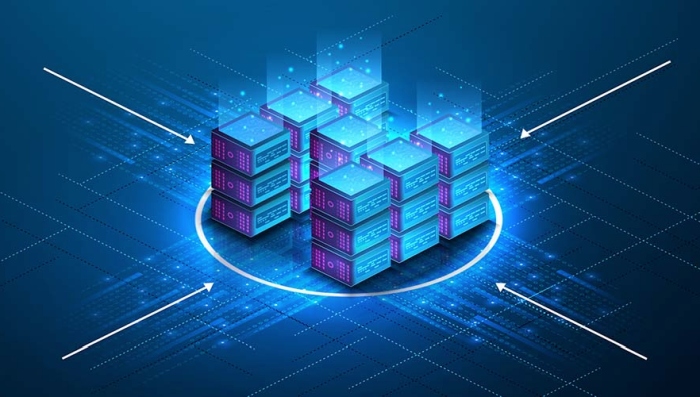May 30, 2024


Immutable backups are now critical for data protection and disaster recovery. Immutable Backups are data copies that do not change for a specified period. Copies of data in this way prevent corruption, deletion, and insertion. This feature guarantees the integrity and availability of important data, even if cyberattacks or human mistakes lead to disaster.
Why are Immutable Backups Important?
The immutable backup has become an indispensable piece of modern data protection methods. When dealing with cyber risk actions that are always changing and data loss cases on the increase like now, the significance of the immutable backup can never be overemphasized. By retaining the integrity and accessibility of important data, immutable backups allow organizations today to negotiate our intricate digital world with confidence in business continuity and regulatory compliance. Here is why immutable backups are necessary:
- Protection Against Data Loss: Through immutable backups, a company should become resistant to loss caused by ransomware attacks, hardware failures, or mistakes on people’s part. A good management policy makes rapid restoration without sacrificing data integrity possible for any organization.
- Compliance and Regulatory Requirements: Many industries are subject to strict data retention and integrity regulations. These organizations can use Immutable backups to assist with reaching standards of compliance, making their data always unaltered and ready for challenge by regulatory agencies at any time.
- Data Resilience and Business Continuity: From natural disasters and pandemics to cybersecurity breaches, businesses can quickly recover critical systems and data in case of unexpected immutable backups. It can help minimize downtime and ensure that operations go uninterrupted.
Immutable Backup vs. Traditional Backups
Immutable backups represent a paradigm shift in data protection: they offer security and resilience that traditional backup systems cannot match. Unlike traditional backups, which are susceptible to tampering and deletion, immutable backups offer an unalterable copy of data. This safeguards the data against organization-wide attacks from ransomware, insider threats, or even if someone accidentally overwrites their whole system. With strict controls to prevent data manipulation, the integrity and availability of critical data are forever safeguarded by immutable backups.
See: India Biometric Data Breach Highlights Cybersecurity Risks
By contrast, traditional backups provide a means to recover data but lack the inherent immutability required for modern security challenges. Such systems are vulnerable because they allow an adversary to exploit open holes in their basic design and delete or alter their backup data. It seriously threatens an organization’s ability to recover from loss of data events effectively. Immutable backups bring an element of proactiveness to the protection of data. They are intended to help shore up digital landscapes that have become increasingly volatile over recent years and thus provide a stable platform for business continuity.
How Does Immutable Backup Work?
Immutable backups utilize various technologies and techniques to attain data integrity and immutability.
- Write Once, Read Many (WORM): Immutability data is written to storage media so that it cannot be modified once written. WORM is used in constructing immutable backup systems; it won’t allow unauthorized changes or deletion of data once written, ensuring data integrity for disaster recovery methods.
- Encryption and Access Controls: To maintain data confidentiality, immutable backups are often encrypted. Traditional user authentication is combined with access control mechanisms for further security and content management control on the backup data.
- Versioning and Timestamps: Immutable backup systems maintain version history and timestamps for each backup. It allows administrators to track changes over time and verify data integrity in their backups.
Best Practices in Managing Immutable Backups
These best practices can help ensure that immutable backups are effective:
Regular Testing and Validation: Growing storage costs don’t necessarily require larger storage budgets; by regularly testing and validating backup recovery processes, organizations can guarantee that their backup systems are reliable and effective. If data loss scenarios are periodically simulated, recovery drills are carried out, and so on, whether the data remains intact as it should. Very early problems occur during restoration. Applications can be brought into operation quickly but with stable storage conditions. When a problem occurs, this proactive approach further serves to help pinpoint the points at fault in a rush — thus providing customers with other newly-published channels.
- Offsite Storage and Redundancy: Backing up data that cannot be changed in geographically diverse locations is necessary to keep data from being lost due to local disasters. It will also shield the quality of your backups. Storing alternate copies of backup data on different sites or cloud regions provides companies with backups that protect against natural disasters, fires, infrastructure failures, etc. This decentralized storage method retains the data at multiple locations to improve data availability and include standby capability in the event of unforeseen incidents.
- Secure Access Controls: To avoid unauthorized viewing of backup data, altering the information, and other harmful acts, you should always carefully implement patrolling and authentication. Companies can stop malicious attackers and unauthorized users from breaking through backup systems or changing the data store simply by laying down strict permissions with strict adherence to strict authentication policies. A comprehensive security strategy that includes features such as multi-factor authentication authority, role tracking, and cryptographic tools is what the security of backup data needs to be planned.
- Continuous Monitoring and Alerting: To identify and respond effectively to backup systems threats or anomalies, ensuring that effective means of continuous monitoring alerting are installed becomes necessary. It allows organizations to intercept attempts upon data, unauthorized modifications, or any other security incidents immediately. Enabling alerts and notifications to managers about potential problems carries out urgent responses and amelioration moves in certain cases, thereby preventing security break-ins or data leaks from affecting business operations.
Immutable Data Storage with Ootbi
Ransomware-proof and immutable out-of-the-box, Ootbi by Object First delivers secure, simple, and powerful backup storage for Veeam customers. The appliance can be racked, stacked, and powered in 15 minutes. Ootbi is built on Zero Trust Data Resilience (ZTDR) principles and delivers S3 native immutable object storage designed and optimized for unbeatable backup and recovery performance, specifically tailored for Veeam storage needs. Eliminate the need to sacrifice performance and simplicity to meet budget constraints with Ootbi by Object First.
Conclusion
With modern data protection strategies, immutable backups have become an essential defense mechanism for business units against potentially losing or tampering their information resources. Whether stored electronically or in printed form, they offer protection from theft and misuse, ensuring data remains intact and unaltered. Organizations can safeguard their most valuable asset: unabridged information by maintaining immutable backup data and ensuring its availability for recovery following a disaster. Adopting best practices and leveraging sophisticated solutions like Ootbi enables organizations to mitigate risks and maintain business continuity in an increasingly complex threat environment.

 The National Crowdfunding & Fintech Association (NCFA Canada) is a financial innovation ecosystem that provides education, market intelligence, industry stewardship, networking and funding opportunities and services to thousands of community members and works closely with industry, government, partners and affiliates to create a vibrant and innovative fintech and funding industry in Canada. Decentralized and distributed, NCFA is engaged with global stakeholders and helps incubate projects and investment in fintech, alternative finance, crowdfunding, peer-to-peer finance, payments, digital assets and tokens, artificial intelligence, blockchain, cryptocurrency, regtech, and insurtech sectors. Join Canada’s Fintech & Funding Community today FREE! Or become a contributing member and get perks. For more information, please visit: www.ncfacanada.org
The National Crowdfunding & Fintech Association (NCFA Canada) is a financial innovation ecosystem that provides education, market intelligence, industry stewardship, networking and funding opportunities and services to thousands of community members and works closely with industry, government, partners and affiliates to create a vibrant and innovative fintech and funding industry in Canada. Decentralized and distributed, NCFA is engaged with global stakeholders and helps incubate projects and investment in fintech, alternative finance, crowdfunding, peer-to-peer finance, payments, digital assets and tokens, artificial intelligence, blockchain, cryptocurrency, regtech, and insurtech sectors. Join Canada’s Fintech & Funding Community today FREE! Or become a contributing member and get perks. For more information, please visit: www.ncfacanada.org
Related Posts
- SEO Powered Content & PR Distribution. Get Amplified Today.
- PlatoData.Network Vertical Generative Ai. Empower Yourself. Access Here.
- PlatoAiStream. Web3 Intelligence. Knowledge Amplified. Access Here.
- PlatoESG. Carbon, CleanTech, Energy, Environment, Solar, Waste Management. Access Here.
- PlatoHealth. Biotech and Clinical Trials Intelligence. Access Here.
- Source: https://ncfacanada.org/why-you-need-immutable-backups-and-how-they-work/



